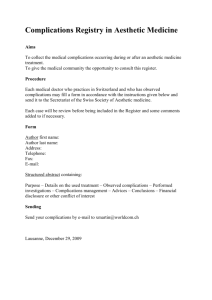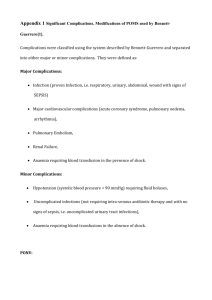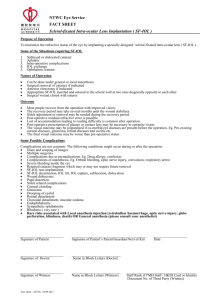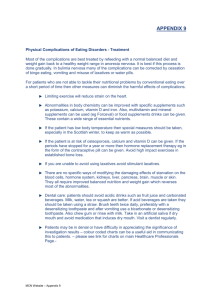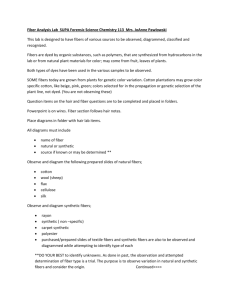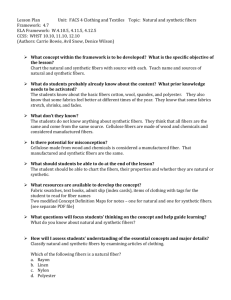COMPLICATIONS IN ARTIFICIAL LIGAMENTS REPAIR
advertisement
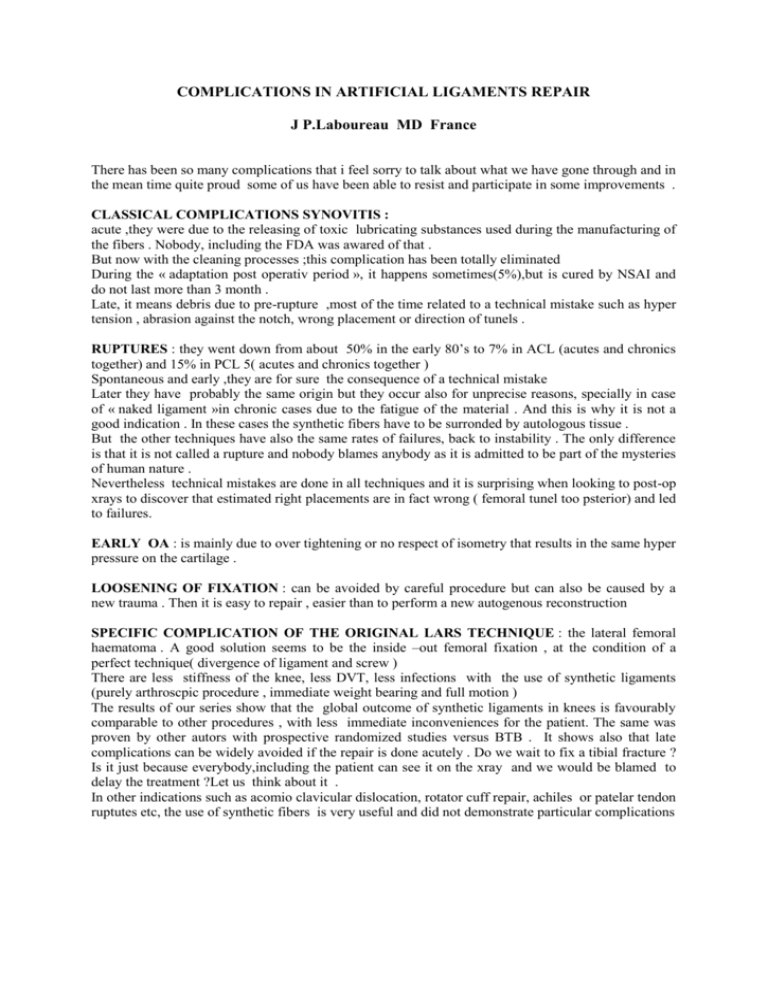
COMPLICATIONS IN ARTIFICIAL LIGAMENTS REPAIR J P.Laboureau MD France There has been so many complications that i feel sorry to talk about what we have gone through and in the mean time quite proud some of us have been able to resist and participate in some improvements . CLASSICAL COMPLICATIONS SYNOVITIS : acute ,they were due to the releasing of toxic lubricating substances used during the manufacturing of the fibers . Nobody, including the FDA was awared of that . But now with the cleaning processes ;this complication has been totally eliminated During the « adaptation post operativ period », it happens sometimes(5%),but is cured by NSAI and do not last more than 3 month . Late, it means debris due to pre-rupture ,most of the time related to a technical mistake such as hyper tension , abrasion against the notch, wrong placement or direction of tunels . RUPTURES : they went down from about 50% in the early 80’s to 7% in ACL (acutes and chronics together) and 15% in PCL 5( acutes and chronics together ) Spontaneous and early ,they are for sure the consequence of a technical mistake Later they have probably the same origin but they occur also for unprecise reasons, specially in case of « naked ligament »in chronic cases due to the fatigue of the material . And this is why it is not a good indication . In these cases the synthetic fibers have to be surronded by autologous tissue . But the other techniques have also the same rates of failures, back to instability . The only difference is that it is not called a rupture and nobody blames anybody as it is admitted to be part of the mysteries of human nature . Nevertheless technical mistakes are done in all techniques and it is surprising when looking to post-op xrays to discover that estimated right placements are in fact wrong ( femoral tunel too psterior) and led to failures. EARLY OA : is mainly due to over tightening or no respect of isometry that results in the same hyper pressure on the cartilage . LOOSENING OF FIXATION : can be avoided by careful procedure but can also be caused by a new trauma . Then it is easy to repair , easier than to perform a new autogenous reconstruction SPECIFIC COMPLICATION OF THE ORIGINAL LARS TECHNIQUE : the lateral femoral haematoma . A good solution seems to be the inside –out femoral fixation , at the condition of a perfect technique( divergence of ligament and screw ) There are less stiffness of the knee, less DVT, less infections with the use of synthetic ligaments (purely arthroscpic procedure , immediate weight bearing and full motion ) The results of our series show that the global outcome of synthetic ligaments in knees is favourably comparable to other procedures , with less immediate inconveniences for the patient. The same was proven by other autors with prospective randomized studies versus BTB . It shows also that late complications can be widely avoided if the repair is done acutely . Do we wait to fix a tibial fracture ? Is it just because everybody,including the patient can see it on the xray and we would be blamed to delay the treatment ?Let us think about it . In other indications such as acomio clavicular dislocation, rotator cuff repair, achiles or patelar tendon ruptutes etc, the use of synthetic fibers is very useful and did not demonstrate particular complications
